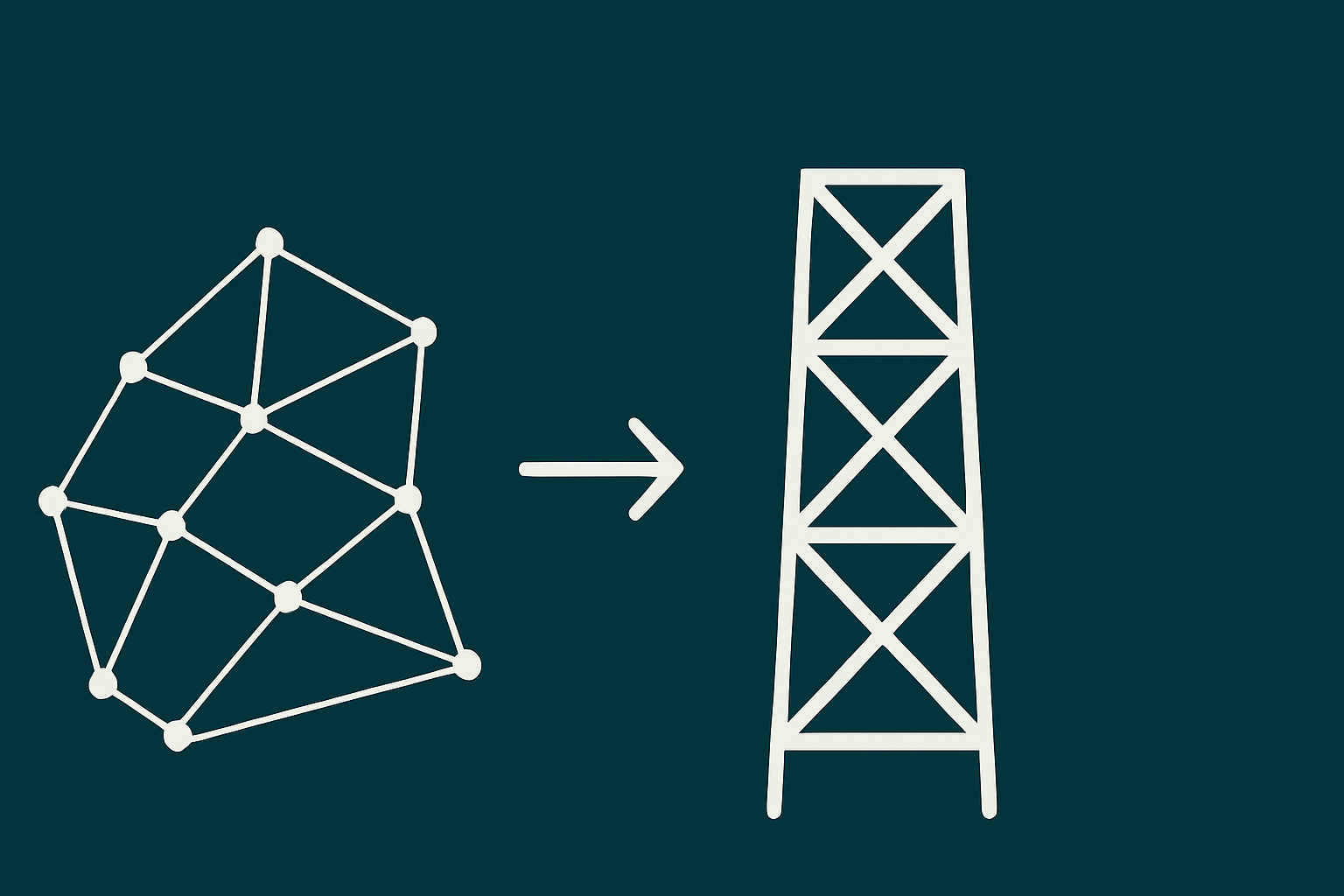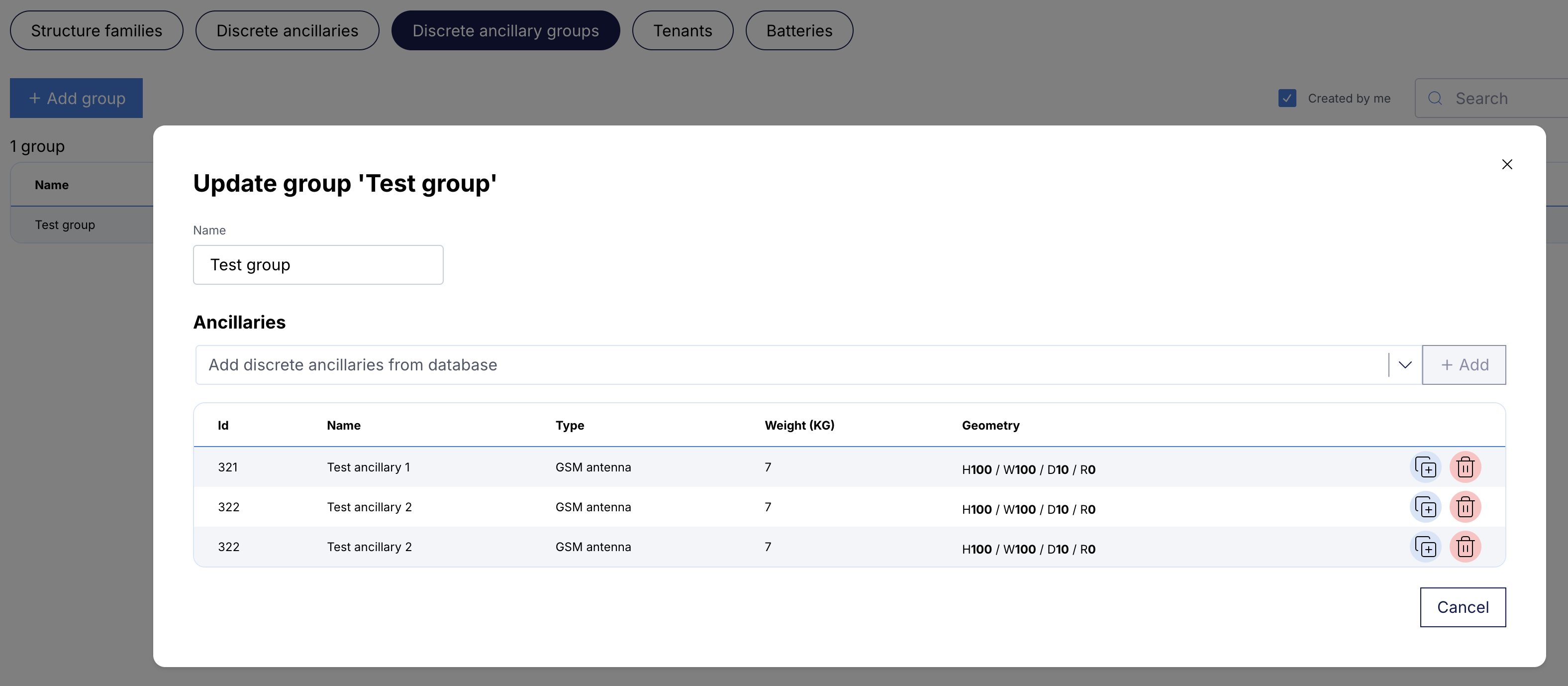The Structural Engineering Workflow Is Changing - Here’s What It Looks Like
“Since I started in telecom in 2005, it’s been the same story: collecting existing data, verifying its accuracy, and trying to get everything into a usable format. The faster we can get on top of the information, the faster we can deliver results.”
- Roger Murphy, Allied Consultant Engineering
In theory, structural analysis starts when you open the model. In practice, it starts much earlier - with a hunt for drawings, spreadsheets, and missing context.
Whether it's an upgrade, a co-location, or a capacity check, the same questions come up at the start: What’s already on the tower? What’s being added? Is the drawing up to date? Who last touched this site?
Answering those questions can take days, not because the analysis is complex, but because the data is scattered, inconsistent, or missing.
This post compares the typical workflow with what it looks like when the process starts with structured, standardised data, and how that shift can make engineering faster, clearer, and more focused.
The Starting Point: A Familiar Challenge
A mobile operator wants to install new equipment on an existing tower. As engineers, the goal is clear: assess whether the structure can handle the new load.
The first few days are often spent gathering the necessary information:
- PDFs from previous reports
- Excel sheets with missing or inconsistent details
- DWG files in various folders
- Photos from old site visits
- Emails back and forth to clarify antenna types or mounting positions
Sometimes, you have to track down whoever last worked on the site. Sometimes, there’s no other option than to send someone to survey it again.
All of this happens before any calculations can even begin.
“Structural engineers bring value when they solve complex problems - not when they’re buried in spreadsheets.”
- Roger Murphy, Allied Consultant Engineering
What a More Structured Workflow Looks Like
Some towercos and consultancies are moving toward more standardised processes by integrating tools like Shapemaker to bring consistency to how tower data is stored, shared, and analysed.
Here’s how the same project could unfold:
- You open the tower in Shapemaker. The structure is already modelled to spec, including members, connections, foundations, and equipment.
- Site-specific wind conditions, terrain category, and orography factor are already accounted for.
- The co-location request is attached to the site, with clearly listed equipment and mounting details.
- You run structural checks according to Eurocode, including full load combinations and capacity checks for members, connections, bolts, and foundations.
- If something needs clarification, a site surveyor can visit and update the model directly in Shapemaker - no need to recreate the structure from scratch afterwards.
It’s a different starting point; one where engineering begins sooner, with fewer assumptions and less rework.
What That Changes in Practice
In the old process:
- Information is scattered across formats and systems.
- Model building is manual, time-consuming, and often based on incomplete data.
- Communication between design, analysis, and site teams is slow.
- Conservative assumptions are often made just to move forward.
With a more structured process:
- Data is stored in a consistent, structured format.
- Site conditions and equipment details are readily available.
- Structural models are built once and reused.
- Field teams can contribute directly to the source of truth.
- Engineering teams spend less time organising data and more time on engineering judgment.
Final Thought
No tool will remove all friction from telecom engineering; there will always be edge cases and complexities. But getting consistent, structured data from the start makes a real difference. It shortens timelines, reduces uncertainty, and ultimately makes the work more focused.
We're seeing more firms make this shift, not just to save time, but to improve the quality and consistency of their analysis.
We're already working with teams across Europe to bring more structure and clarity to telecom infrastructure analysis. If you’d like to see how it could work for you, contact me at js@shapemaker.io.

.jpg)



